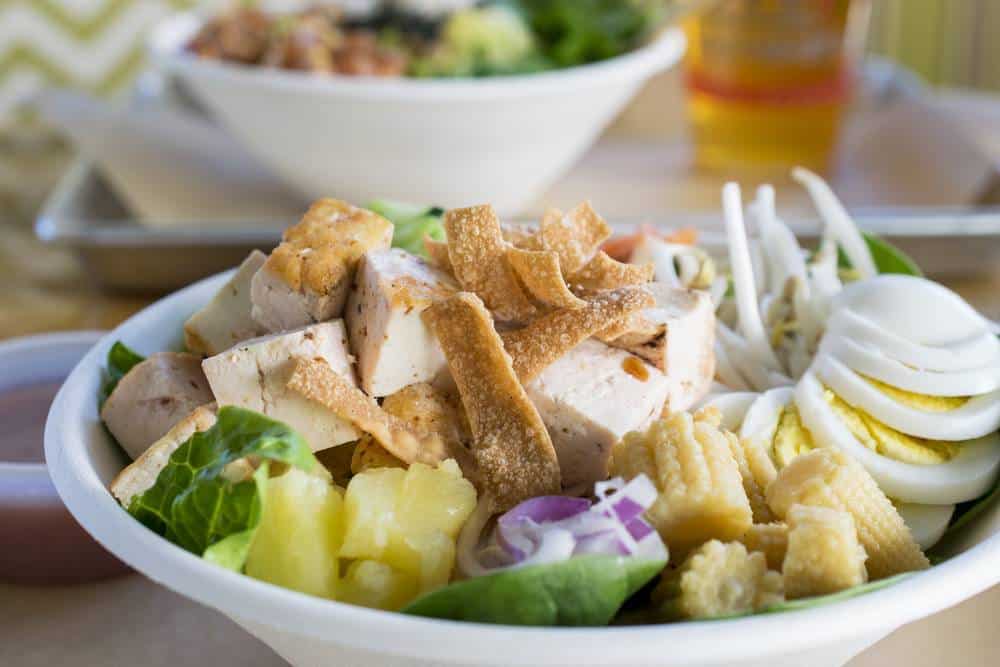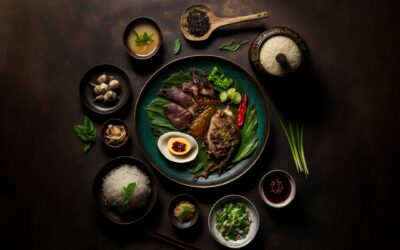Classic Asian Cuisine – A Taste of Asia
Asian cuisine is local, authentic, and traditional. It is rich in flavor and taste from the herbs and spices used in the preparations. Asian cuisine features multicultural dishes from diverse cultures and origins from southeast Asia, Europe, America, and around the globe. Asian food is reminiscent of people that have visited Asia or have had the Asian cuisine taste – a taste of Asia. Asia is a large region which makes it difficult to pick out traditional Asian dishes. The food from this region is influenced by the history, experiences, culture, and lifestyle of the people.
People enjoy good Asian cuisine, reflecting their way of life, culture, and practices. For example the Spanish, the French, the Vietnamese, and the Cambodians have all adopted Asian ingredients and flavor combinations. Asian cuisine is refreshingly sour, sweet, spicy, and bittersweet, prepared with vegetables, meat, and rice. The meat adds to the gratifying taste. Service is ‘family style’ where all dishes are placed on the table and each person picks a bit of each to be consumed in small bowls amidst an animated, boisterous crowd. Thus, you can label Asian cuisine with culture, ingredients, and preparations.
The Evolution of Asian Cuisine
The art of cooking is one of the ancient human activities – probably the oldest basic survival activities humans engage in. Even early humans like gatherers and hunters cooked. Their preparation of food was simple. There was no special way of cooking. It involved getting a kill and throwing it into the fire. Then the food was accompanied by vegetables and fruits. Since those times, Asian cuisine has evolved–especially the methods of preparations, but the ingredients have maintained their authenticity.
The Diversity of Good Asian Cuisine – Culture and lifestyle
Relishing Asian cuisine is like an expedition. The efforts put in the preparations tell the history of the people and their nation with each meal portraying a people’s lifestyle and practices. The Asian way of cooking has continued to evolve. It is now easy to get the ingredients. The methods of cooking may have evolved and changed, but the culture has remained unchanged. Asian cuisine has stood the test of time and is now globally enjoyed by a diversity of cultures. New Asian cuisines are being developed by native communities in international Asian cities, like Singapore, Bangkok, and Seoul. Is it possible to find a taste of Asia in Fort Worth? Of course! You will always find a taste of Asia in Asian restaurants near you.
The Asian Cuisine ingredients – A Taste of Asia
The good taste of Asia is derived from the ingredients used in its preparations. These ingredients are from all over the Asian region. Traditional and native plants and vegetables, give the food its flavor. A good meal begins with the basics, which are the common dishes. For example Southeast cuisine meals like ‘nonya laska’ and ‘gohu ikan’. The ingredients are vegetables, fish, spices and herbs, rice or noodles, and meat. Many restaurant owners combine different products from different regions in their finished dishes. These interactions with the ingredients have been a welcome move over time. It’s like going on a taste adventure.




‘Gochujang’ – Flavors of Asia
‘Gochujang’ is a Korean red chili paste that is sweet, spicy, and salty. Red chili powder and glutinous rice are its main ingredients. Gochujang makes an array of sauces which gives a rich flavor to the meat, vegetables, and fish in a dish.
Noodles – Flavors of Asia
Noodles are the most versatile food found in Asian cuisine. They are found in various Asian recipes in different forms from a variety of ingredients from the Asian region.
Vermicelli Rice Noodle – Flavors of Asia
Thin rice noodles are used as part of a salad, in paper rice rolls, or in soup. They are easy and quick to prepare. The rice noodle is often served in dried anchovy broth. Dried anchovies are also eaten with vermicelli as a snack.
Soy Sauce – Flavors of Asia
Soy Sauce is a common ingredient in Asian food. You will find it placed on the dinning tables in Asian restaurants. There is a wide range of different types of soy sauce from all over Asia, but the two most common are light soy sauce and dark soy sauce. The light sauce is a food condiment or seasoning while the dark sauce is for marinating or coloring meat. There are also other sauces used to add flavor to Asian Meals. For example the sweet soy sauce, and oyster sauce – a sweet, thick sauce with a rich color of caramel – gives dishes an aromatic, sweet taste.
Herbs and Spices
A taste of Asia spices and herb blends are popular. Asian meals incorporate herbs and spices during their preparations, providing each meal with a perfect mix of taste and flavor. Aromatic, spicy, savory, sour, and sweet sensations are carefully balanced so that Asian cuisines are relishing with flavor and savory taste.
Apart from the flavor, the herbs help to improve general wellness and are known to cure health problems like colds and flu. If you make a habit of consuming Asian food, you are maintaining a healthy diet. Human bodies respond to nutritional nourishment from minerals, supplements, and other nutritious compounds. These nourishments respond to stimuli in the human body systems. For Example, the caffeine in coffee stimulates and arouses the nerve system.
Herbs and spices are used in medicines to treat chronic illnesses. A plethora of research on herbs and spices and their use in medicine has been published in many studies. Herbs common in Asia are ginger, garlic, lemongrass, turmeric, and coriander. Ginger gives the food fragrance and aroma and adds relish to dipping sauces and soups. It is also used to treat colds, runny nose, and throat infections. Garlic adds flavor to the food, treats blood pressure, and lowers heart attacks. It can also widen the blood vessels and is an antioxidant that aids in preventing infections.
Preparations of Good Asian Cuisine – A Taste of Asia
The preparations of Asian delicacy cannot compare to west culinary techniques. Yet, the modern cooking styles, equipment, and availability of the ingredients are comparable. The emergent of Asian stores globally is an added advantage. The Asian community has low-tech devices, and wood or gas fires instead of wall ovens. Asian cuisine is easier in real cooking mechanisms and more diverse in herbal and spice blends of its sweet, acidic, salty, bitter, and spicy balance than typical Western cuisine. Recipes are less precise and chefs focus on taste, fragrance, and appearance.
Another major variation includes meat being used more as a condiment than the main dish. Asian cuisine is focused on the preparation of light dishes. The cooking involves the combination of steaming and stir-frying using olive oil. The meat, which is always part of the meal, is grilled while the vegetables are boiled.
Health benefits of Asian Cuisine – A Taste of Asia
The differentiator in Asian cuisine is the rich nutritional value it provides. The Asian food culture and lifestyle of Asian people is exceptional. It contributes to general health and wellness. This is due to the nourishment derived from elements of its ingredients and creates body immunity and the ability to fight diseases. The ingredients are authentic and plant-based. Due to their cooking methods, the food contains fewer calories, at least 300 or less for one serving. It is good for those watching diet.
Conclusion
The perception of a taste of Asia is a dynamic phenomenon that requires many parameters. It has defied age, ethnicity, and taste buds. The savory taste of good Asian cuisine is a result of the blending of ingredients and cooking methods. The meals are enjoyed amidst a boisterous of positive chaos and conversations.
Our Other Recent Posts
The Irresistible Allure of Beef Teriyaki: A Flavorful Journey in USA
If you’ve yet to experience the exquisite gastronomic delight that is beef teriyaki, you are missing out. This dish, popular in USA-based restaurants and beyond, is prepared using thinly sliced beef that has been marinated in a delectable blend of sweet and savory...
From Thailand to Vietnam: The Best Noodle Dishes in Southeast Asia
When it comes to Southeast Asian food, the one staple food you might think of is either rice or noodles. While rice is nice, you can’t overlook the hearty noodle. Fortunately, there are many different kinds of noodle dishes, from savory soups to stir fry, you’ll be...
Exploring Southeast Asian Street Food Culture
There’s no greater place on earth to experience authentic and exciting street food than Southeast Asia. From Malaysia to Thailand, from Vietnam to Cambodia the food and culture are lively and complex. Many of the dishes served in Southeast Asian countries have basic...
GET CATERING DETAILS
Drop Us a Line
Don’t be shy. Let us know if you have any questions!



